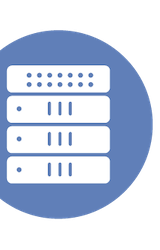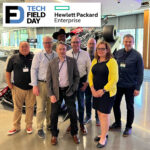|
|
This video is part of the appearance, “Server Management with HPE iLO and OneView“. It was recorded as part of Next Gen HPE ProLiant Compute Deep Dive at 12:30-13:30 on April 8, 2025.
Watch on YouTube
Watch on Vimeo
The HPE ProLiant platform includes industry-leading management capabilities in iLO, including OneView and COM. This session features demonstrations of these features and functions. Presented by Andrew Elisavetsky, Technical Enablement, Chris Bradley, Technical Enablement Manager, and Chris Powell, Technical Enablement.
Chris Powell and Andrew Elisavetsky began the session by demonstrating the new capabilities of HPE’s iLO 7 management interface for Gen 12 servers and its integration with the Compute Ops Management (COM) platform. Powell highlighted how iLO 7 has been significantly revamped for intuitive usability, allowing users to manage servers from a geographic overview without relying on traditional inventory spreadsheets. They emphasized the benefits of connecting through the GreenLake platform, which enhances system visibility and control across edge and data center environments. Additionally, Powell showcased improvements in baseboard management controller security, including enforced TLS 1.2/1.3 encryption, integration with secure enclaves, remote key management, and regular firmware scanning with new protocols like SPDM to prevent rogue updates.
Andrew Elisavetsky demonstrated how to configure and manage systems using both iLO directly and with COM. He showed how initial server setup functions such as RAID configuration, BIOS tuning, and security settings could be done manually through iLO or scaled efficiently across fleets using server groups and shared profile templates in COM. Through server groups, users could automate BIOS settings, firmware updates, OS installations, and storage configurations. The updated COM interface simplifies lifecycle management and deployment workflows, especially across widespread environments such as retail or edge deployments, where systems can be delivered pre-configured directly to remote sites. These bulk configuration and automation tools become especially useful for managing large environments with minimal human intervention.
The presentation concluded by comparing COM with the long-standing OneView platform, clarifying that while COM introduces a modern, cloud-based alternative, HPE remains committed to OneView, especially in environments requiring on-premises management like government data centers. HPE acknowledged current limitations in declarative infrastructure management with tools like Terraform and Ansible but pointed to expanding API support and PowerShell commandlets as steps toward broader integration. Furthermore, the speakers underscored COM’s value in sustainability tracking and lifecycle reporting, providing critical insights like energy consumption and carbon footprint analysis, which support modernization efforts across mixed-generation hardware. Overall, HPE’s ProLiant compute management strategy is designed to unify edge and core environments under a single, scalable platform.
Personnel: Andrew Elisavetsky, Chris Bradley, Chris Powell









